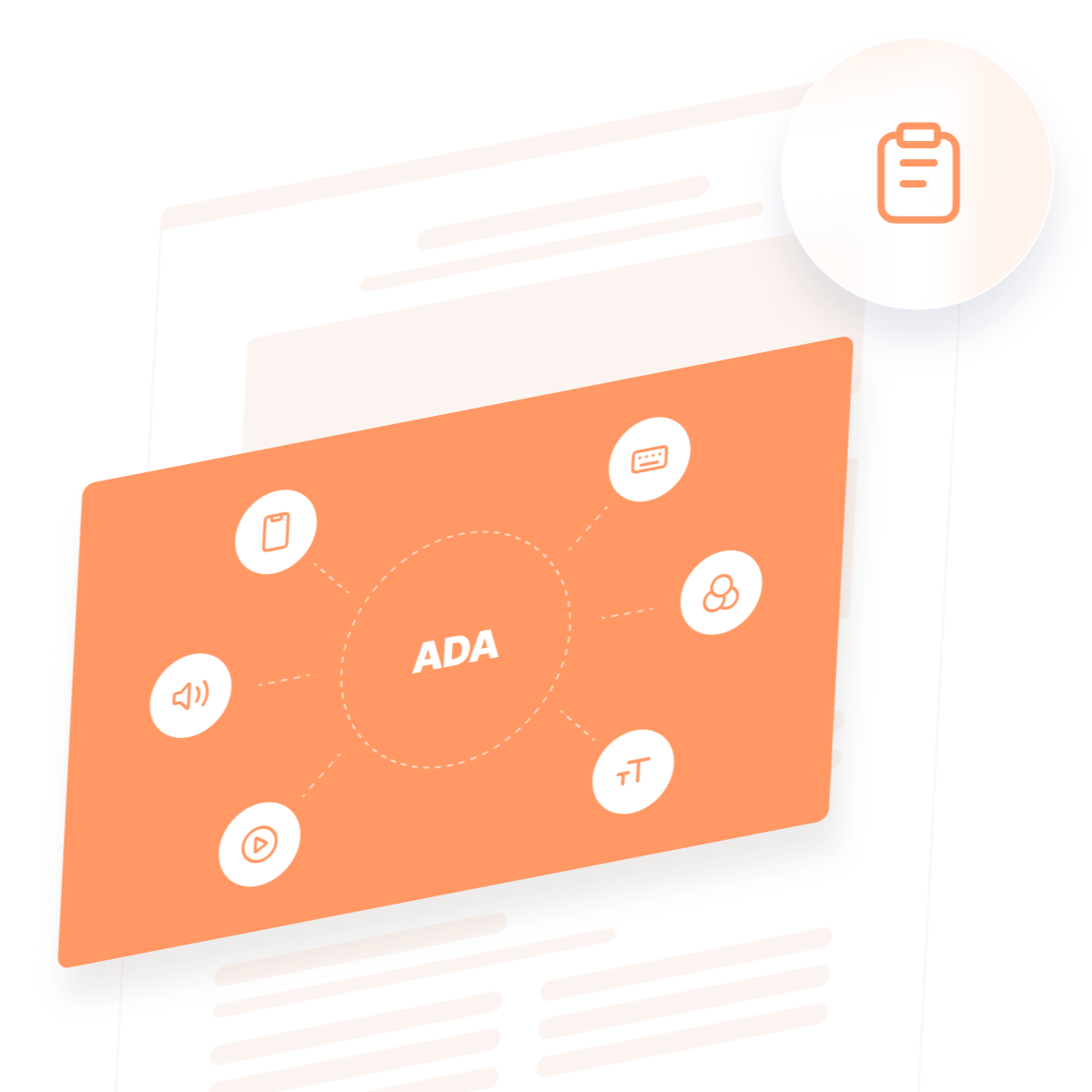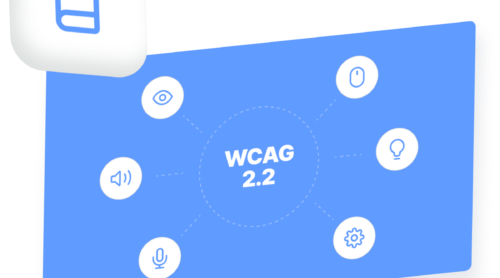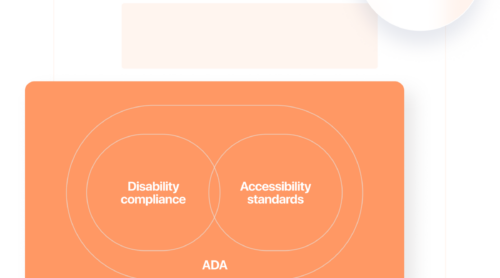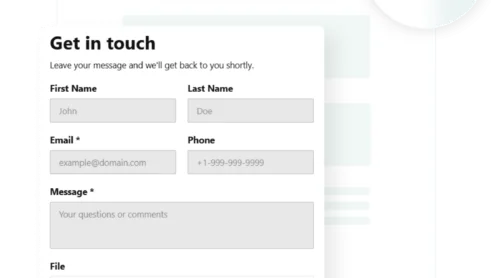In today’s digital-first world, making your website accessible is no longer a luxury — it’s a necessity. ADA website compliance requirements are designed to ensure that people with disabilities can interact with and navigate websites just as easily as anyone else. In 2025, these requirements continue to evolve, becoming more than just a legal checklist — they represent a commitment to inclusivity.
The Americans with Disabilities Act (ADA), enacted in 1990, is a civil rights law that prohibits discrimination against individuals with disabilities in all areas of public life — including transportation, employment, and now, digital spaces. With the internet being a primary source of information and services, ADA standards for websites have become essential for ensuring equal access.
Here’s why ADA website accessibility is critical for any modern organization:
- Legal protection. Complying with ADA guidelines helps you avoid lawsuits and fines stemming from inaccessible digital experiences.
- Inclusive experience. People with visual, auditory, cognitive, or motor disabilities can access your content without barriers.
- Better usability for all. Accessible design often improves navigation, readability, and mobile responsiveness for every visitor.
- Brand reputation. Demonstrating social responsibility through accessibility enhances trust and credibility.
- Improved SEO. Many accessibility improvements, like proper headings and alt text, also support better search engine rankings.
Whether you’re a small business owner, nonprofit, or enterprise developer, embracing digital accessibility practices is now a vital part of running a professional online presence. Meeting legal regulations isn’t just about meeting regulations — it’s about future-proofing your digital presence.
Why ADA Compliance Matters for Websites
Understanding ADA digital requirements is essential not only for legal protection but also for ethical and user-experience reasons. Websites are now considered a place of public accommodation under the ADA, which means they must be accessible to individuals with disabilities, just like physical spaces are.
Failing to comply with ADA rules for websites can lead to more than just technical issues. It can result in lawsuits, financial penalties, negative press, and even loss of trust from your audience. In recent years, thousands of businesses have faced legal action due to inaccessible digital experiences.
But it’s not just large corporations at risk. Any business or organization that offers goods or services through a website — whether it’s a university, retailer, healthcare provider, or local nonprofit — has a responsibility to ensure that all users, regardless of ability, can access their online content.
Who needs to comply? Any entity with a public-facing website — including private businesses (Title III), government agencies (Title II), and nonprofits — should follow ADA accessibility standards.
By ensuring equal access, you’re not only minimizing legal risk — you’re opening your digital doors to a broader audience and fostering inclusivity. Beyond regulation, accessibility is a reflection of your brand’s commitment to user-centered experiences and legal obligations for digital platforms.
Overview of Official Compliance Requirements
Now that the importance of accessibility is clear, let’s explore what ADA website compliance requirements actually entail. While the ADA itself does not outline specific technical criteria, it is widely interpreted through the lens of the Web Content Accessibility Guidelines (WCAG), which are considered the gold standard for accessibility. These guidelines help translate ADA rules into actionable design and development principles.
To help businesses meet digital compliance standards, the table below outlines the core accessibility elements you should focus on:
| Requirement | Description |
|---|---|
| Text Alternatives | Provide meaningful alt text for all non-text content such as images, buttons, and icons to help screen readers interpret visual elements. |
| Keyboard Accessibility | Ensure that all navigation and interactive elements can be operated via keyboard alone, without the need for a mouse. |
| Semantic Structure | Use proper heading levels (H1, H2, etc.), labels, and ARIA landmarks to structure content logically for assistive technologies. |
| Color Contrast & Readability | Maintain a contrast ratio of at least 4.5:1 between text and background. Allow users to resize text up to 200% without loss of content or function. |
| Captions & Audio Descriptions | All video content should include captions. Audio content should have accompanying transcripts or visual alternatives. |
| Error Handling | Provide clear, accessible error messages for form inputs. Suggest corrections and allow users to review submissions before finalizing. |
| Time-Based Content | Allow users to control moving content (e.g., sliders or auto-play videos), extend timeouts, or pause animations as needed. |
| Responsive Design | Ensure that your layout adjusts to all screen sizes and assistive technology environments without breaking visual or structural elements. |
When you focus on optimizing layout for disabilities and improving user interaction for all, ADA compliance becomes more than just a checkbox — it becomes a strategic part of delivering inclusive and professional digital experiences.
Understanding ADA and WCAG Overlap
The ADA web accessibility standards set the legal expectation that all individuals, including those with disabilities, must be able to access and use digital content. However, the ADA does not explicitly define what technical steps a website must take to be considered accessible. This is where the WCAG comes into play.
Maintained by the W3C (World Wide Web Consortium), WCAG provides a set of detailed technical recommendations that serve as the practical foundation for digital accessibility. In most legal cases and industry best practices, ADA web content accessibility guidelines are interpreted and implemented by following WCAG levels — especially WCAG 2.1 and 2.2.
In short, WCAG translates the goals of the ADA into measurable, testable outcomes. These include key standards like proper heading structure, descriptive link text, keyboard navigability, and compliance with contrast ratio recommendations to support users with visual impairments.
- The ADA is a legal civil rights law that mandates accessibility but does not define how to achieve it technically.
- WCAG is a technical standard that explains how to build accessible experiences and is used as the reference point for ADA enforcement.
Understanding the relationship between ADA and WCAG helps clarify your responsibilities: one sets the mandate, the other provides the blueprint. Next, we’ll look at the actual accessibility guidelines you should follow to implement both.
Core ADA Accessibility Guidelines Explained
To ensure full compliance, website owners must follow a set of well-established principles that guide the creation of inclusive, accessible online experiences. While WCAG offers the technical direction, these are often referred to as the ADA website accessibility guidelines in legal and industry contexts. These best practices define what it means to operate an ADA-compliant website in 2025.
Below is a breakdown of the most essential rules — each one focused on improving usability for people with different disabilities, whether visual, auditory, cognitive, or motor-related. Together, these standards help support ADA accessible website guidelines that ensure no visitor is left behind.
- Use semantic HTM.: Mark up content properly with headings, lists, and labels so screen readers can interpret the structure correctly.
- Enable keyboard navigation. Make sure users can interact with all interactive elements using only a keyboard.
- Organize content clearly. Group related information and provide consistent navigation across pages.
- Design accessible menus. Use ARIA roles, visible focus indicators, and dropdowns that expand via keyboard commands.
- Provide visible focus states. Ensure interactive items (like links or buttons) have a clear outline when selected via keyboard.
- Allow screen reader compatibility. Add alt text, ARIA labels, and skip links to support assistive technologies.
These ADA website accessibility guidelines are not only about compliance — they’re about crafting a better experience for everyone. By building accessible navigation menus and adopting an inclusive interface design philosophy, you’re ensuring that all users — regardless of ability — can engage with your content confidently.
How to Verify Your Website Meets ADA Standards
The next step is making sure your website actually meets those requirements. Verification involves identifying areas that may not align with ADA website compliance standards and resolving them before they create barriers for users or lead to legal issues.
To do this effectively, you’ll need to conduct thorough accessibility audits, test assistive technology compatibility, and review both design and code structure. Many organizations use a combination of automated and manual testing to get a full picture of accessibility performance.
Checklist for Verifying Website Accessibility
| Step | Description |
|---|---|
| Run automated scans | Use tools like WAVE, Axe, or Lighthouse to detect missing alt attributes, low contrast text, and form field issues. |
| Conduct manual keyboard testing | Navigate your website using only a keyboard to test focus visibility, logical tab order, and accessible dropdowns. |
| Test with screen readers | Use NVDA, VoiceOver, or JAWS to experience how screen reader users interact with your content and layout. |
| Review WCAG criteria | Evaluate your content against WCAG 2.1 Level AA, which serves as the recognized benchmark for ADA compliance. |
| Involve real users | Invite people with disabilities to test the website and offer insights into usability and functional barriers. |
| Document findings | Track issues, solutions, and audit progress. This documentation demonstrates a proactive approach to ADA compliance. |
By regularly evaluating your content against ADA website compliance rules, you not only reduce legal risks but also create a smoother, more inclusive experience for everyone.
If you’re looking for a simple, effective way to improve accessibility without diving deep into code, consider using the Elfsight ADA Compliance widget. This easy-to-install solution adds a powerful accessibility layer to your website, helping you meet compliance requirements with minimal effort. It includes tools for text resizing, color contrast adjustment, keyboard navigation enhancements, and more — making your website more user-friendly and inclusive for everyone.
How to set up the widget with Elfsight:
- Start with a Template. When entering the widget builder, select a template and click “Continue with this template” to begin.
- Check your website’s accessibility. Go to the “Check” tab and enter your domain. The built-in analyzer, powered by Google Lighthouse, will assess your content for common accessibility flaws and highlight areas needing attention under roles, labels, and broader EAA standards.
- Configure settings. In the “Settings” tab, choose the display language, device rules, preferred widget position, and visitor memory duration. Advanced users can also insert their own CSS or JavaScript for styling tweaks.
- Add the widget to your website. Press “Add to website for free” and copy the code shown in the “Embed Code” section. Then paste it into your website’s embed or HTML field — and you’re all set.
Once installed, the widget begins working immediately to boost accessibility and create a friendlier environment for every user — whiskers and all.
Take the first step toward compliance and inclusivity — build your accessibility widget now!
Design Best Practices for Accessible Websites
Applying ADA standards in your website’s design phase is one of the most effective ways to ensure long-term compliance. Beyond ticking legal boxes, good accessibility design focuses on creating a seamless, inclusive experience for all users — from the visually impaired to those navigating with limited mobility.
Prioritize Clear Structure and Layout
An intuitive, user-friendly website structure not only supports usability but also ensures that assistive technologies can interpret your content logically. Use consistent navigation patterns, clearly marked buttons, and skip-to-content links to improve the experience.
Make Visual Design Inclusive
Color contrast plays a crucial role. Maintain a ratio of at least 4.5:1 between text and background. Avoid relying on color alone to convey meaning — pair visual indicators with labels, icons, or tooltips. This helps users with visual impairments and color blindness understand interactive elements.
Ensure Flexible Interactions
Think in terms of adaptive user interface practices. For example, allow users to pause or stop animations, avoid auto-playing media with sound, and enable zoom without breaking layout. A responsive interface that adjusts cleanly across devices improves access and comfort for all.
Focus on Interaction Design
Forms and interactive elements must be accessible too. Label all input fields, provide helpful instructions, and design error messages that are clear and easy to correct. Make sure users can submit forms using only a keyboard.
Following these ADA compliance website guidelines during the design process helps you build inclusively from the start — rather than having to retroactively fix inaccessible elements later. In the next section, we’ll zoom in on one often overlooked design factor: fonts and readability.
ADA-Compliant Fonts and Readability Tips
Typography plays a bigger role in accessibility than many realize. Selecting ADA compliant fonts can significantly improve the user experience for individuals with dyslexia, low vision, cognitive disabilities, or reading impairments. Legibility is not just an aesthetic choice — it’s a functional necessity.
The ADA does not mandate a specific font family, but accessibility experts agree on several key traits that contribute to text readability improvement. These include simplicity in letterforms, generous spacing, and strong contrast against the background.
Font Characteristics That Support Accessibility
- Sans-serif fonts: Fonts like Arial, Helvetica, and Verdana are generally easier to read because they lack decorative strokes that can blur together on screen.
- Avoid script or stylized fonts: Decorative or cursive fonts may look elegant but are often illegible for readability for low vision users.
- Use at least 16px body size: This ensures default text is comfortably readable across devices without zooming.
- Line height and spacing: Use a line-height of at least 1.5 and generous letter-spacing to prevent visual clutter.
- Color contrast: Maintain a minimum contrast ratio of 4.5:1 between text and background — this is especially vital for users with visual impairments.
Choosing the right fonts and formatting isn’t just about aesthetics — it directly impacts how accessible your content is to all readers. Simple, well-spaced, and legible typography can transform a frustrating experience into a frictionless one.
FAQ
What disabilities should a compliant website accommodate?
Does ADA compliance apply to mobile versions of a website?
How often should a website be tested for ADA compliance?
Is it enough to include an accessibility statement?
Are PDFs and downloadable content covered under ADA guidelines?
Conclusion
Verifying compliance is only part of the journey — ongoing improvements are essential for keeping up with evolving ADA standards for websites. Accessibility is not a one-time fix, but a long-term commitment to creating digital spaces that are open to everyone.
As legal expectations expand and new technologies emerge, businesses should prioritize planning for legal updates by maintaining flexible, scalable solutions. By doing so, you’ll not only avoid potential risks but also strengthen user experience, brand reputation, and digital reach. Embrace accessibility now — and lead the way in building a more inclusive web for tomorrow.







